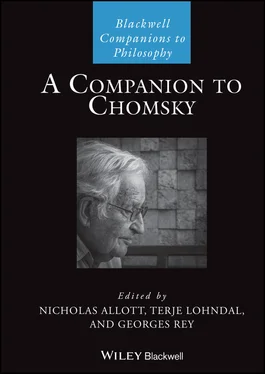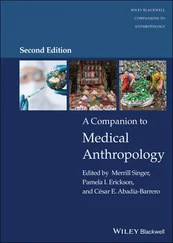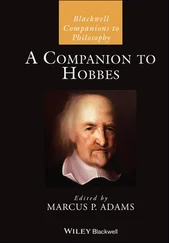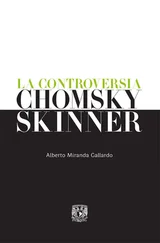A Companion to Chomsky
Здесь есть возможность читать онлайн «A Companion to Chomsky» — ознакомительный отрывок электронной книги совершенно бесплатно, а после прочтения отрывка купить полную версию. В некоторых случаях можно слушать аудио, скачать через торрент в формате fb2 и присутствует краткое содержание. Жанр: unrecognised, на английском языке. Описание произведения, (предисловие) а так же отзывы посетителей доступны на портале библиотеки ЛибКат.
- Название:A Companion to Chomsky
- Автор:
- Жанр:
- Год:неизвестен
- ISBN:нет данных
- Рейтинг книги:3 / 5. Голосов: 1
-
Избранное:Добавить в избранное
- Отзывы:
-
Ваша оценка:
- 60
- 1
- 2
- 3
- 4
- 5
A Companion to Chomsky: краткое содержание, описание и аннотация
Предлагаем к чтению аннотацию, описание, краткое содержание или предисловие (зависит от того, что написал сам автор книги «A Companion to Chomsky»). Если вы не нашли необходимую информацию о книге — напишите в комментариях, мы постараемся отыскать её.
Companion
Companion
A Companion to Chomsky
A Companion to Chomsky — читать онлайн ознакомительный отрывок
Ниже представлен текст книги, разбитый по страницам. Система сохранения места последней прочитанной страницы, позволяет с удобством читать онлайн бесплатно книгу «A Companion to Chomsky», без необходимости каждый раз заново искать на чём Вы остановились. Поставьте закладку, и сможете в любой момент перейти на страницу, на которой закончили чтение.
Интервал:
Закладка:
1.3 Part II: Contemporary Issues in Syntax
Over the past 70 years, since the work that led up to his (1951) MA thesis on Hebrew 8 , Chomsky has developed and revised his ideas, sometimes radically, often in reaction to work that emerged in the large community of linguists working within the generative framework. As Alexiadou and Lohndal's chapter makes clear, the differences from one period to another may be quite substantial, yet the core questions that are being addressed are often rather similar. Each new path attracted new students and scholars, but some scholars also decided to stick to the previous path (cf. Sells 1985). As such, the new ideas have also led to a rather dynamic community, and sometimes controversy as to what is the best way forward.
Often, the theory has been developed based on a small set of data (e.g., so‐called “expletive” constructions in English such as There were many students in her class/It is raining today, where the There and It are semantically vacuous). But then the theory makes numerous predictions about other areas of the grammar that can then be tested and, as a result, the theory is often revised. This is just normal science, in which theories are frequently revised and sometimes replaced as new evidence is considered and greater depth achieved.
Some opponents of Chomsky have criticized him for being too focused on English, or for not caring enough about the coverage of data from the thousands of the world's languages. Apart from his master's thesis on Hebrew, it is fair to say that Chomsky has not personally worked on a large number of languages. However, generativists have pursued comparative syntax across languages from many different families from Amharic to Zoque – including both spoken and sign languages (see e.g. Lasnik and Lohndal 2013; Allott and Rey 2017). This work was one of the considerations that led directly to the Principles and Parameters approach, which proposes that UG is a combination of fixed principles and variable parameters – e.g. whether a verb precedes its direct object or vice versa – which are set during language acquisition on the basis of what the child hears. In fact, as Mark Baker's chapter makes clear, Chomsky's work has contributed significantly to the study of linguistic diversity.
Of course, the languages of the world at least superficially appear to vary widely. Appreciating the cross‐linguistic evidence, using it to triangulate on UG, and to show how, despite the diversity of superficial appearances, all these languages plausibly do respect UG, requires careful analyses of the expressions in these languages – just as appreciating the underlying unities in any domain requires analyses beyond surface appearances (as in biology, chemistry, physics – who would have thought that ice and steam are the same substance?).
The present section covers multiple topics that all relate to contemporary issues in syntax. In Chapter 8, David Adger deals with the nature of hierarchical relations, in particular the computational procedure needed to generate such relations. In contemporary parlance, this operation is called Merge, and it has become a hallmark of the program, partly also because of Chomsky's suggestion that Merge may be one of the evolutionary novelties that enabled humans to develop language. Adger is concerned with what kind of computing device this is, and among others, he discusses the relationship between the abstract specification of a function and procedures to compute it.
Adger's chapter also prepares the ground for Peter Svenonius's chapter, Chapter 9, which discusses Merge and syntactic features, collectively described as “the engine of syntax.” Minimalism has pursued Chomsky's (1995b) proposal that the grammatical operations themselves are very simple, but that they operate on lexical items (e.g., morphemes, such as words and suffixes) that may have a range of individual features that are the basis of a complex grammar. A great deal of research has been devoted to determining the class of these possible features across human languages, their character (are they binary or multivalent, for example), and the relationships and possible interdependences between them. Svenonius provides an overview of some ways in which this pursuit has been carried out, focusing in particular on the operations not only of Merge, but also “Agree,” which governs the interaction between different kinds of features.
As we've mentioned, language variation has always been important to Chomsky's program, leading to the emergence of the Principles and Parameters theory in the late 1970s. In Chapter 10, Baker discusses the importance of linguistic diversity in Chomsky's work, as described above. Baker divides Chomsky's career into three different phases, using three influential books as representatives of each phase.
In Chapter 11, Michelle Sheehan probes the issue further in discussing Chomsky's influence on the modelling of linguistic variation, in particular work that has suggested some kind of parametric approach to language variation. Originally, this approach assumed that linguistic variation was pretty much like a “switchboard” where the task of acquiring syntax was confined to determining the correct setting for each property listed on the switchboard. This model has undergone substantial changes, which Sheehan discusses alongside objections to the very concept of parameters.
As Cheng and Griffiths' chapter in Part I made clear, one of the enduring discoveries of the Chomskyan research program is the restrictions it proposed on non‐local dependencies, such as those involved in wh ‐movement, where, as we saw above, the movement of wh‐ words out of a conjunction is barred (see also related examples (a)–(c) in fn. 4). Gereon Müller's chapter ( Chapter 12) discusses these in great detail and provides an overview of the various ways in which these have been accounted for.
Chomsky's own work has mostly focused on synchronic grammatical analyses. However, his work has also inspired work on historical change mainly in the area of syntax, in particular through the realization that much language change happens through language acquisition. Chapter 13, Elly van Gelderen's chapter, provides an overview of this development, including his most recent work on labeling.
Another area where Chomsky's thinking has inspired a great deal of work is the area of second language acquisition. In Chapter 14, Roumyana Slabakova discusses ways in which work on second language acquisition has embraced theoretical developments in syntax, and how it has sometimes informed those developments as well. In recent years, work on multilingual speakers more generally has burgeoned. This research has tried to unravel the nature of mental representations in speakers who master multiple languages. Chapter 15by Tanja Kupisch, Sergio Miguel Pereira Soares, Eloi Puig‐Mayenco, and Jason Rothman puts this recent development in context and explains its importance.
1.4 Part III: Comparisons with Other Frameworks
There are, of course, many ways in which grammar can be studied. Chomsky's methodology has been remarkably influential and successful, but it is important to compare it with other perspectives. For reasons of space, we obviously could not do justice to the many perspectives in the larger field of linguistics. We have chosen comparisons with three prominent approaches to syntax: “nonderivational,” but broadly generative approaches, general statistical learning, and usage‐based approaches.
A hallmark of Chomskyan approaches has always been that they are what is called “derivational,” that is, that they assume that non‐local dependencies are created by what is typically called movement (e.g., in What did you eat for breakfast? , what has moved from its original position as the object of the verb eat ). However, in the late 1970s, nonderivational approaches started to emerge, where rules of grammar are stated as constraints that apply to representations, i.e. ruling that they are allowed (well‐formed) or barred (ill‐formed). Such approaches are often called “declarative” (sometimes “representational”) as they do not have a procedural component – the grammar is not characterized in terms of derivational steps. 9 However, they share with Chomsky the goal of providing explicit and structured accounts of a well‐formed expression in a given language and for any language. Chapter 16by Peter Sells discusses three different declarative frameworks and shows in detail how they are compatible with Chomsky's early work, and then outlines their design features, and provides examples of grammatical analyses within such frameworks.
Читать дальшеИнтервал:
Закладка:
Похожие книги на «A Companion to Chomsky»
Представляем Вашему вниманию похожие книги на «A Companion to Chomsky» списком для выбора. Мы отобрали схожую по названию и смыслу литературу в надежде предоставить читателям больше вариантов отыскать новые, интересные, ещё непрочитанные произведения.
Обсуждение, отзывы о книге «A Companion to Chomsky» и просто собственные мнения читателей. Оставьте ваши комментарии, напишите, что Вы думаете о произведении, его смысле или главных героях. Укажите что конкретно понравилось, а что нет, и почему Вы так считаете.












